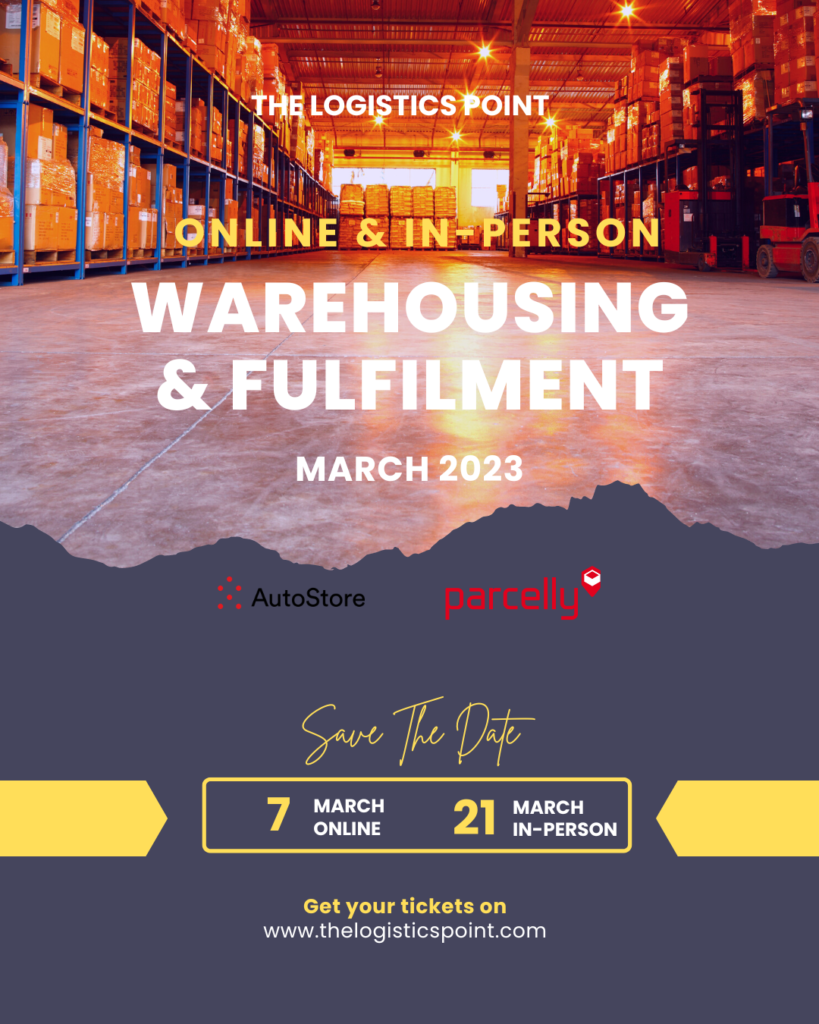Sponsored Content
Innovation is not easy and there are many challenges along the way. But companies need to be proactive and do things faster than before. We spoke to Chris Jones from Descartes Systems Group about a recent survey the company conducted on innovation in the supply chain across the USA and Europe. What drives innovation? Who is responsible for it? And more. You can watch the full video interview below and learn more about Descartes survey and how they can help you here.
Chris, Descartes Systems Group recently conducted a survey in the North America and Europe to find out more about companies’ innovation efforts. Can you summarise the main findings and what you found interesting?
Chris Jones: In the last couple of years a lot of people found that their supply chains are lacking, and their performance wasn’t really where they needed it to be or the business environment changed. As a result, 59% of the respondents accelerated the pace of innovation. They started new innovation programs and projects and put more emphasis on them.
The idea behind innovating is to create something that the customer sees as a potential differentiator and to make you better than the competitor.

More about Descartes Systems Group
Our expertise comes from working with thousands of companies in a variety of supply chain and logistics areas. Many of them do extremely innovative things and we are able to look across them and understand what is possible from a broader sense. Technology obviously plays an important part as an enabler, but it really is about marrying a customer’s vision with an understanding of what can be done and the knowledge of how to do it.
This could include the sourcing strategies, fulfilment, etc. It really is about a fundamental change. Technology is a key part of it but there is more.
The number one innovation was fulfilment. One of the big things we noticed is the drive to transforming the consumers’ experience and improving stickiness of the customer. We also asked people what type of systems they thought were the most innovative? The top answer at nearly 27% was their Warehousing Management Systems (WMS). Equally interesting was that nearly the same percentage of people said that WMS is the area that requires the most innovation. Similar systems like Transport Management Systems, Order Fulfilment, etc all show in the roughly the same area of interest and importance.
Most people realise they have things they do well, but there are many areas they need to work on and improve.
Behind the percentages is hidden the reason. Is it easy to find out why people give these answers?
Chris Jones: We also asked people what the primary reason for innovation was. At 37% each were cost and resilience. Resilience is probably not a surprise given what has happened over the last several years. Cost is a function of today’s economic challenges. Across the globe interest rates, for example, are higher than they have been for the last 40+ years. Companies are reacting to current financial situations but also the structural changes that occurred in the past.

Key Points
- Create something that the customer sees as a potential differentiator
- Innovate in a time frame that is less than a year
- Focus on what matters to your company the most
- Seek management support and employee engagement
- Don’t finger point if you fail
We also wanted to know more about their financial performance. Other questions included management’s attitude towards supply chain innovation, employee’s turnover. Senior management belief and support of innovation is absolutely crucial. Based on management’s backing, you can tell how fast innovation is moving and how excited people are about it.
Financial performance also clearly matters, and we think innovation leads to good financial performance. Lastly, the companies that could keep their employees were in much better shape to innovate.
So innovation is not about stabilising things but pushing them further and creating growth?
Chris Jones: Yes, exactly. It is about pushing things further but in a managed way. For this we asked about the pace people feel their company is innovating with. Those with senior management backing and lower employee turnover, all scored much higher on innovation pace.
What is good is that nowadays so many companies have realised they are in competition with their supply chains. If they are not moving forward and innovating they are or will significantly fall behind.
Lack of management support, low financial stability and high employee turnover are significant innovation hindrances.

How should managers understand the concepts of supporting innovation and employees to innovate?
Chris Jones: Companies haven’t always done a good job with how they measure the value of innovation. The classic theory in supply chain is to focus on metrics such as on-time-in-full (OTIF). But this is actually base expectation. Innovation really about what your organization isdoing to grow revenue, to improve customer stickiness or create some level of competitive differentiation. Metrics related to these points help paint the picture of the full value of innovation.
In the survey, the number one thing stopping innovation was management tolerance for risk. Innovation is about getting out there and not doing what everyone else is. When you move into the unknown, there is always a chance that things are not going to go as planned. It doesn’t mean have to you bet the company. But it does mean that people have to understand that not everything has to be a sure thing.
How do we manage the transition between the past and the new normal which is the result of innovation?
Chris Jones: People should stop patting their backs for past successes. Many do something that is great, but they get stuck there. You want to paint a vision and create a culture of what’s the next thing we’re going to go do. You also want to get your best and brightest employees onboard, so they feel like they are contributing.
These are the people who will bring everyone else with them as part of the innovation process.
This is why we also focused the study on employee turnover because when it is high there is no ability to create that culture that fosters ownership and willingness to take risks.
Do we focus on innovating the core functions of the company or start at more peripheral areas?
Chris Jones: I do not think it is either one or the other. Many people take the things that are their day-to-day activities and try to improve them and innovate because there is something missing there. For others, the core functions are well established but they want to improve support functions. Let’s say that a logistics company would like to digitize bookings and delivery options to make the customer experience better.
How can we manage an innovation project that didn’t go as planned?
Chris Jones: Let’s start with finding out why it failed. Don’t let this be a finger pointing exercise and trying to find whose fault it was. Ask different types of questions. Was our vision complete enough? Did we understand the key points we needed to do this?

Frankly, it could also be that the vendor promised you something they had no capabilities to deliver. Or maybe they serve a specific aspect of an industry that is just not suitable for your organisation. RFID was a great example of an innovation that did not go anywhere for a lot of companies.
This was because the technology couldn’t be blindly implemented without considering purely technological and physical aspects like blocking signal access due to the types of goods being moved and tracked. The key point is to recognise that it is okay to try but when you see it is not working, you have to stop quickly. Many companies just burn through money and efforts even if there is nothing of value because there is too much invested ownership.
Do you think innovation will suffer because there is a possible global recession coming?
Chris Jones: Some people view this as a problem and some as an opportunity. All of a sudden, companies find areas they were not innovating that have a significant cost impact due to inflation.
This is an opportunity to go there and innovate and improve them. Two-thirds of the respondents in our survey said they will increase innovation investment for the next 2 years. Inflation is high and likely it will stay high, so people want to use it as a point of leverage for innovation in their business.
Can we put a number on how long and how much a project should take us?
Chris Jones: There should be a premium for something that is faster. In the past I have seen companies with projects that go on for two to three years. If you have started something in 2019 and aimed to finish it by 2023, I would say the starting assumptions and conditions are no longer there. Being slow is a risk today.
We would like to see organizations execute innovate projects in a time frame that is less than a year. Innovation is not about being perfect, but getting significant results quickly. You might find that not everything is perfect after you have begin getting benefits and need to follow up to clean it up. .
You can watch the full video with Chris Jones from Descartes Systems Group below.


